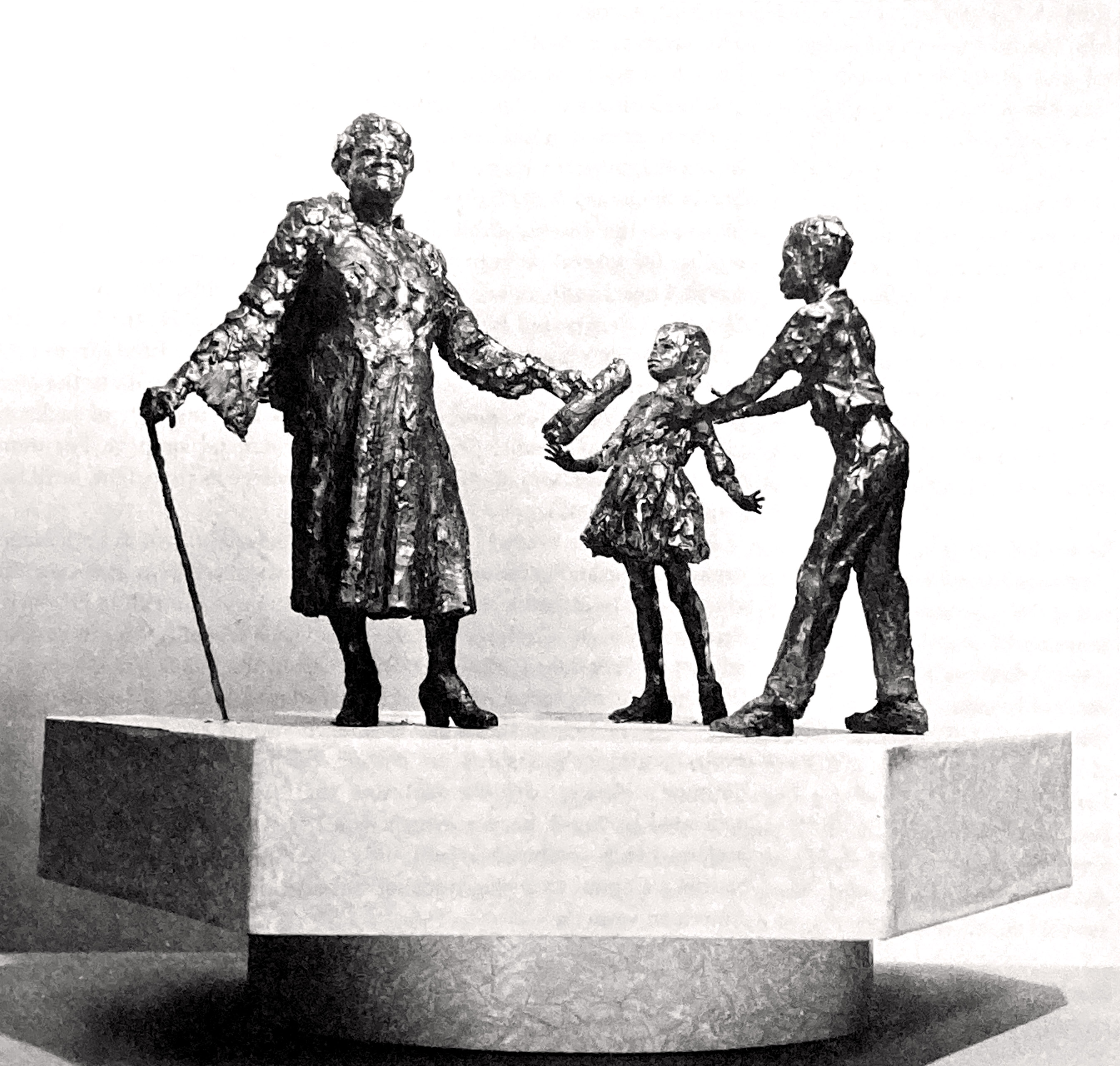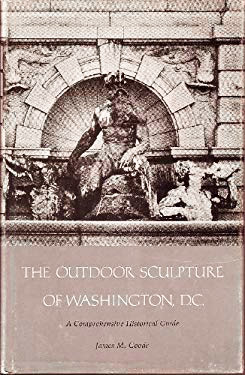Mary McCleod Bethune Memorial
The Outdoor Sculpture of Washington, D.C.
by James M. Goode
November 1, 1974

Title: Mary McCleod Bethune Memorial, 1974
Location: Lincoln Park, East Capitol adm 12th Streets, NE
Sculptor: Robert Berks
Architect: Unknown
Medium: Bronze
The Mary McLeod Bethune Memorial by New York sculptor Robert Berks is scheduled for dedication on July 10, 1974, the birthday of Mrs. Bethune (1875–1955), on a site located at the east end of Lincoln Park on Capitol Hill. The sculpture group honors one of the leading American Negro educators. The National Council of Negro Women, Inc., a group which Mrs. Bethune founded in 1935 to help improve the living and working conditions of Negro families, made plans in the late 1950s for this memorial. Although Congress authorized the memorial on federal land within the city and the design was subsequently approved by the United States Fine Arts Commission, the original target date of completion of 1963, the 100th anniversary of emancipation, was abandoned because of lack of funds and because of the sponsoring group's involvement in the movement for civil and human rights for Negroes. The $400,000 bronze memorial consists of a 17-foot-high statue of Mrs. Bethune handing a copy of her legacy to two Negro children, an 11-year-old boy and an 8-year-old girl. She holds in her right hand a cane given to her by President Franklin D. Roosevelt. Although lacking in financial wealth but rich in love and compassion, she wrote in part in her "Last Will and Testament" a final message to America's Negro youth I leave you love. I leave you hope. I leave you the challenge of developing confidence in one another. I leave you a thirst for education. I leave you a respect for the use of power. I leave you faith. I leave you racial dignity, I leave you a desire to live harmoniously with your fellow men. I leave you, finally, a responsibility to our young people.
This stirring quotation appears on the six-sided pedestal which has been designed by the sculptor to support the three figures.
Mrs. Bethune was born the fifteenth child of freed slaves in 1875 on a cotton plantation near Mayesville, South Carolina. She was educated in the Presbyterian Board of Missions for Freedmen in Mayesville, at Scotia Seminary (now Barber-Scotia College) in Concord, North Carolina, and the Moody Bible Institute in Chicago. After serving as a teacher for several years in mission schools administered by the Presbyterian Church, she moved to Daytona Beach, Florida, and founded the Daytona Literary and Industrial School for Training Negro Girls. This school was kept open only by her personal appeal for funds from both impoverished Negroes and wealthy northern families living in the area. In 1923 her school was merged with the Cookman Institute of Jacksonville and the Methodist Church assumed financial support. For more than thirty years Mrs. Bethune served the college as president, until her retirement in 1947.
As early as the 1920s Mrs. Bethune became well known in both Negro organizations and in national educational and government agencies. She was invited to attend a child welfare conference at the White House by President Calvin Coolidge in 1928. She was the only Negro woman adviser to President Franklin D. Roosevelt in the 1930s. As Director of the Division of Negro Affairs of the National Youth Administration, Mrs. Bethune helped thousands of Negro youths acquire jobs in work projects and scholarships to college during the Depression. Mrs. Bethune's greatest achievement was the legacy of a lifelong career dedicated to young people, which won her worldwide recognition and acclaim. This sculpture is not only the first such memorial in the Nation's Capital to a Negro leader but also the first to an outstanding American woman.
 Mary McCleod Bethune Memorial, The Outdoor Sculpture of Washington, D.C.: a comprehensive historical guide. November 1, 1974 by James M. Goode, Page 87.
Mary McCleod Bethune Memorial, The Outdoor Sculpture of Washington, D.C.: a comprehensive historical guide. November 1, 1974 by James M. Goode, Page 87.